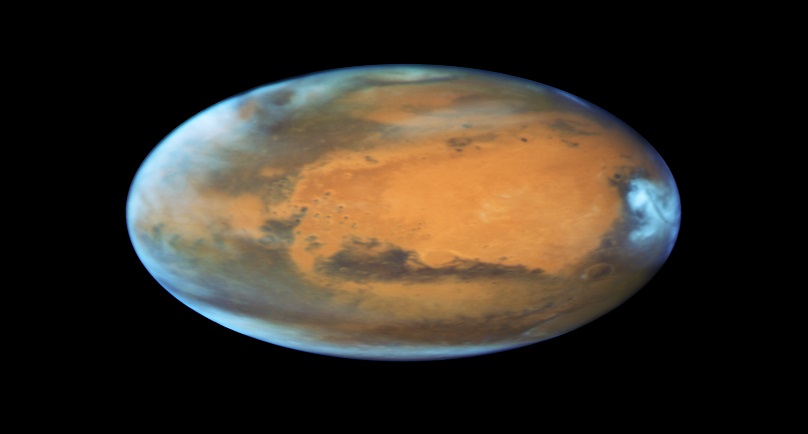![]()
By Irene Klotz
CAPE CANAVERAL, Fla. (Reuters) – An analysis of radar images that peered inside the polar ice caps of Mars shows that Earth’s neighbor is coming out of an ice age that is part of an ongoing cycle of climate change, scientists said on Thursday.
The Martian ice began its retreat about 370,000 years ago, marking the end of the last ice age, according to the research published in the journal Science.
Using images taken by satellites orbiting Mars, the researchers determined that about 20,872 cubic miles (87,000 cubic km) of ice has accumulated at its poles since the end of the ice age, mostly in the northern polar cap.
Scientists are keenly interested in piecing together the climate history of Mars, which contains strong evidence that oceans and lakes once pooled on its surface, bolstering the prospects for life.
Scientists can now use the new ice measurements in computer simulations to more accurately model the Martian climate, said planetary scientist Isaac Smith of the Southwest Research Institute in Boulder, Colorado, who led the study.
“Previously those models were unconstrained by observations so they started with guesses. Now they have more to run on,” Smith said.
The study also was the first to tie a specific layer of Martian ice with a specific period of time. “Eventually we’d like to be able to do this for every layer,” Smith said. From the perspective of an Earthling, every day on Mars may feel like an ice age.
According to NASA, temperatures on Mars may hit a high at noon at the equator in the summer of roughly 70 degrees Fahrenheit (20 degrees Celsius), or a low of about minus-225 degrees Fahrenheit (minus-153 degrees Celsius) at the poles.
Unlike Earth, ice ages on Mars occur when its poles are warmer than average and frozen water is more stable at lower latitudes. Transitions between lengthy climate phases can leave telltale features in the ice, the research showed.
For example, Smith and colleagues found dramatic slopes in layers of ice within the Martian northern ice cap. Other layers reveal ice flowing in reverse direction. The climate cycles are triggered by changes in Mars’ orbit and tilt, which affect how much sunlight reaches the planet’s surface.
The shifts are particularly dramatic on Mars because theplanet’s tilt changes by as much as 60 degrees, compared to variations in Earth’s tilt of about 2 degrees.
(Reporting by Irene Klotz; Editing by Will Dunham)
Copyright 2016 Thomson Reuters. Click for Restrictions.


